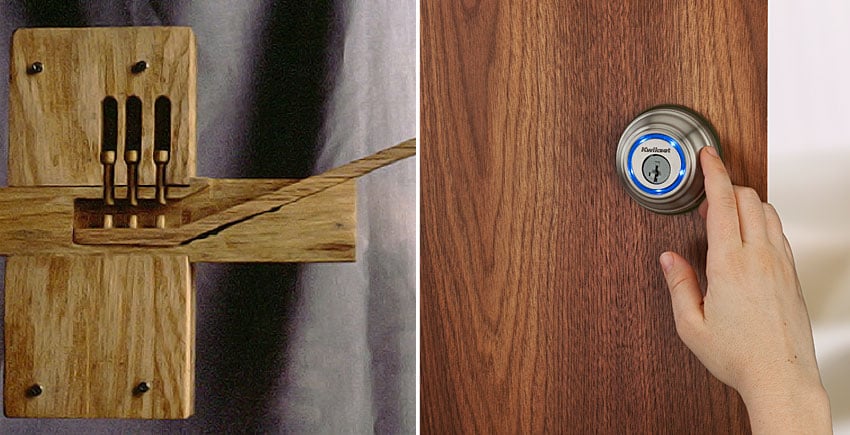
Around 4000 B.C., ancient Eqyptians developed the pin/tumbler lock and as far as we know, this was the earliest use of a mechanical lock. Though it’s a different design than what we’re used to today and was also created entirely from wood, it’s considered to be the precursor of all modern pin/tumbler style locks.
Understanding how locks work is essential to understanding how to pick them. We teach lock picking on ITS as a useful skill-set, not to advocate illegal methods of entry. We do so to illustrate the “delusion of security” and to help you realize how unsafe most locks are. Armed with this knowledge, you can better equip your home with upgraded locks and countermeasures to keep your family safe. Knowing this skill-set and having the right tools on hand, can also potentially save you from hiring a locksmith, or even the life of a loved one.
Gawker recently put together a great little infographic showcasing the history of the lock and key.
Head over to their site and check it out in its entirety:
From Status Symbol to Safeguard: A Visual History of Lock and Key
Lock sport is an honest, ethical, and legitimate hobby. Unfortunately, the whole world hasn’t figured that out yet (though we’re working on it!). Because the lay person has a tendency to perceive what we do as somehow nefarious, it is extra important that we commit to following a strict code of ethics. For this reason, the above credo is non-negotiable in the lock sport community. Lockpicking should never, ever be used for illegal or even questionable purposes. Please do not misuse this information. We assume no responsibility for your actions, and in no way condone immoral activity. Help keep locksport fun for all by following strictly the one rule.
“You may only pick locks you own or those you have been given explicit permission to pick.”
Egyptian lock photo © Smith College History of Science